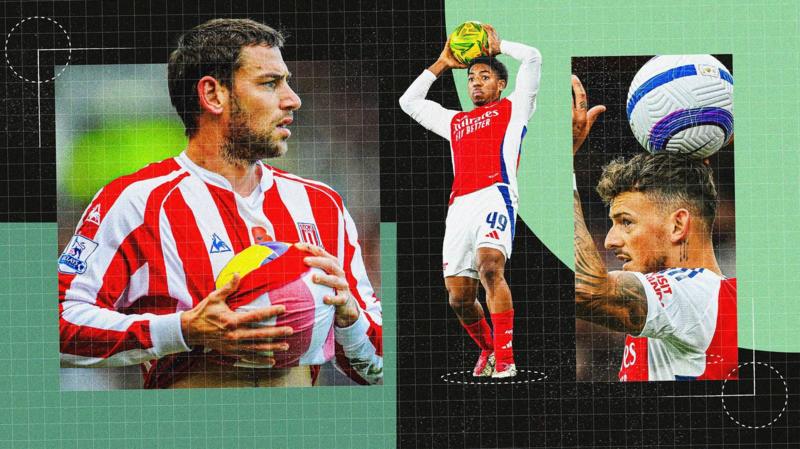Unleash the Power of Throw-Ins: Mastering the Delap Delivery Technique




The game of soccer is continuously evolving, and one of the areas frequently overlooked by fans but meticulously studied by professional coaches is the art of the throw-in. It's not just about retaining possession anymore. Progressive teams are now using throw-ins as a tactic to gain strategic advantages, much like set pieces, turning a simple restart into a potentially game-altering moment. This concept of weaponizing throw-ins has roots that go deep, and a notable resurgence can be traced back to one Irish footballer's iconic technique: Rory Delap's long throw-ins.
Rory Delap, a name synonymous with the long throw-in, brought this tactic into the spotlight during his time at Stoke City. His ability to hurl the soccer ball into the penalty box with the precision and velocity of a corner kick transformed throw-ins from a benign restart into a genuine goal threat. Delap's throws became a pivotal part of Stoke's offensive strategy, proving so effective that they contributed significantly to Stoke's Premier League survival and notable upsets over stronger teams.
This resurgence of interest in throw-ins has led some teams to delve deeper into their tactical implications. The throw-in can be utilized to break the opponent’s defensive line or to restart the game quickly and catch them off-guard. For instance, if a team is facing a high defensive line, a well-executed long throw can catapult the ball behind the defense, potentially allowing attackers to bypass the offside trap and go through on goal.
Moreover, understanding the importance of location is crucial for maximizing the effectiveness of throw-ins. For instance, throw-ins near the opponent’s goal area are statistically more likely to lead to scoring opportunities, especially if executed quickly before the defense has time to properly organize. Conversely, throw-ins in one's own half require careful management to prevent turnovers in dangerous areas.
More recently, the tactical handling of throw-ins has seen even greater innovation with the introduction of specialist coaches, such as Thomas Gronnemark, who has worked with top clubs like Liverpool. His role as a throw-in coach involves not just improving the distance and accuracy of throw-ins but also devising clever movement patterns and routines designed to maximize possession and create offensive opportunities. Under his guidance, teams have honed their throw-in strategies to retain possession more effectively and press the opposition, crafting a more dynamic and unpredictable approach to what was once a static restart.
The various strategies around throw-ins illustrate the broader tactical evolution within soccer, where every element of play is analyzed and optimized. For instance, teams now employ quick throw-ins to maintain tempo or use them as a trigger for pressing, ensuring that opponents have less time to rest or regroup. Sevilla FC’s recent UEFA Europa League victories saw effective use of quick throw-ins, which kept their opponents continuously under pressure, showcasing another facet of strategic throw-ins.
Additionally, implementing throw-in drills during training sessions has become more commonplace, focusing on aspects like players’ positioning, timing, and spatial awareness. This preparation is targeted not only at the thrower but also at the potential receivers and subsequent player movements, highlighting the comprehensive tactical nature of modern soccer.
The humble throw-in, often seen as just a method to restart play, now encapsulates a microcosm of soccer’s tactical depth. With every throw, teams have a chance to manipulate game dynamics subtly, forcing opponents to adapt continuously. This aspect of soccer strategy may not be as glamorous as a spectacular goal or a dazzling piece of skill, but as seen with the evolving tactics and its impact on game outcomes, it is no less important. As soccer continues to develop, the throw-in stands as a testament to the sport's inexhaustible capacity for innovation, providing teams small yet significant opportunities to gain the upper hand in this vastly competitive sport.